Introduction to Chandrayaan 3
India’s space exploration program has witnessed remarkable strides in recent years, and Chandrayaan 3 stands as the epitome of India’s commitment to exploring the cosmic frontier. Building upon the success of its predecessors, Chandrayaan 1 and Chandrayaan 2, this mission represents India’s relentless pursuit of scientific excellence and technological prowess.
Chandrayaan 3 is the third lunar exploration mission by the Indian Space Research Organisation (ISRO). Following the achievements and setbacks of Chandrayaan 2, ISRO embarked on Chandrayaan 3 with renewed vigor and determination.
Table of Contents
Chandrayaan 3 Mission Objectives
The primary objective of Chandrayaan 3 is to further expand our understanding of the Moon’s surface and its geology. The mission aims to demonstrate India’s capability to soft-land on the lunar surface, focusing on enhanced technology and precision.
Demonstrate Technological Advancements:
- One of the primary objectives of Chandrayaan 3 is to showcase India’s advancements in space technology. By incorporating cutting-edge propulsion systems, navigation algorithms, and communication protocols, the mission aims to demonstrate India’s capability to undertake complex lunar missions with precision and reliability.
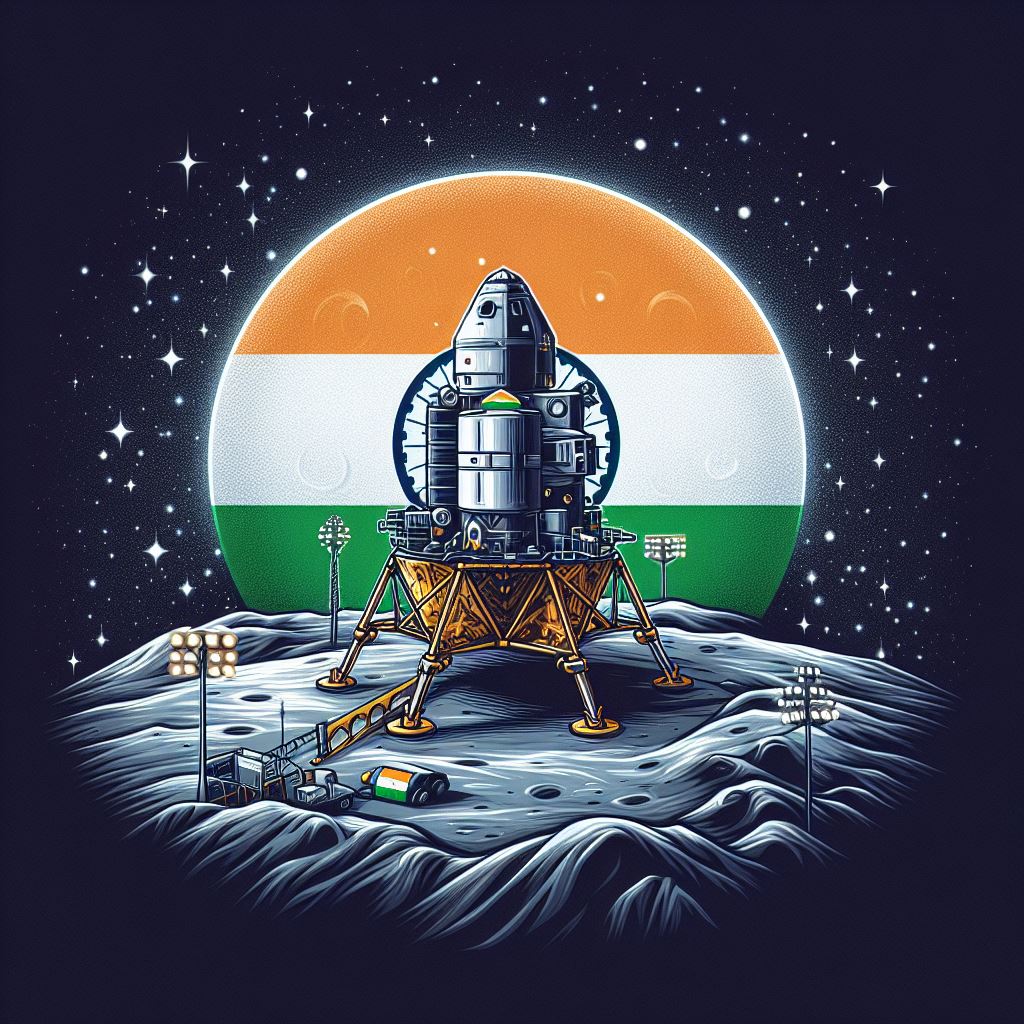
Achieve Soft Landing on the Lunar Surface:
- Building upon the experiences of Chandrayaan 2, Chandrayaan 3 seeks to achieve a successful soft landing on the lunar surface. This objective is crucial for conducting detailed scientific exploration and collecting samples for analysis, paving the way for deeper insights into the Moon’s composition and geological history.

Enhance Scientific Understanding of the Moon:
- Chandrayaan 3 aims to expand our scientific understanding of the Moon by conducting comprehensive studies of its surface features, mineral composition, and geological formations. By deploying advanced imaging instruments and analytical tools, the mission seeks to unravel the mysteries surrounding the Moon’s origin and evolution.
Investigate Water Ice Deposits:
- One of the key objectives of Chandrayaan 3 is to study the presence and distribution of water ice deposits on the lunar surface. Understanding the abundance and accessibility of water resources is crucial for future lunar exploration missions and potential utilization by human settlements.

Characterize Lunar Environment:
- Chandrayaan 3 aims to characterize the lunar environment, including radiation levels, temperature variations, and surface conditions. This data is essential for assessing the feasibility of prolonged human presence on the Moon and developing technologies to mitigate potential hazards.
Test Indigenous Technologies:
- The mission serves as a platform to test and validate indigenous technologies developed by Indian scientists and engineers. By leveraging homegrown expertise and innovation, Chandrayaan 3 showcases India’s self-reliance in space exploration and fosters the growth of the domestic space industry.
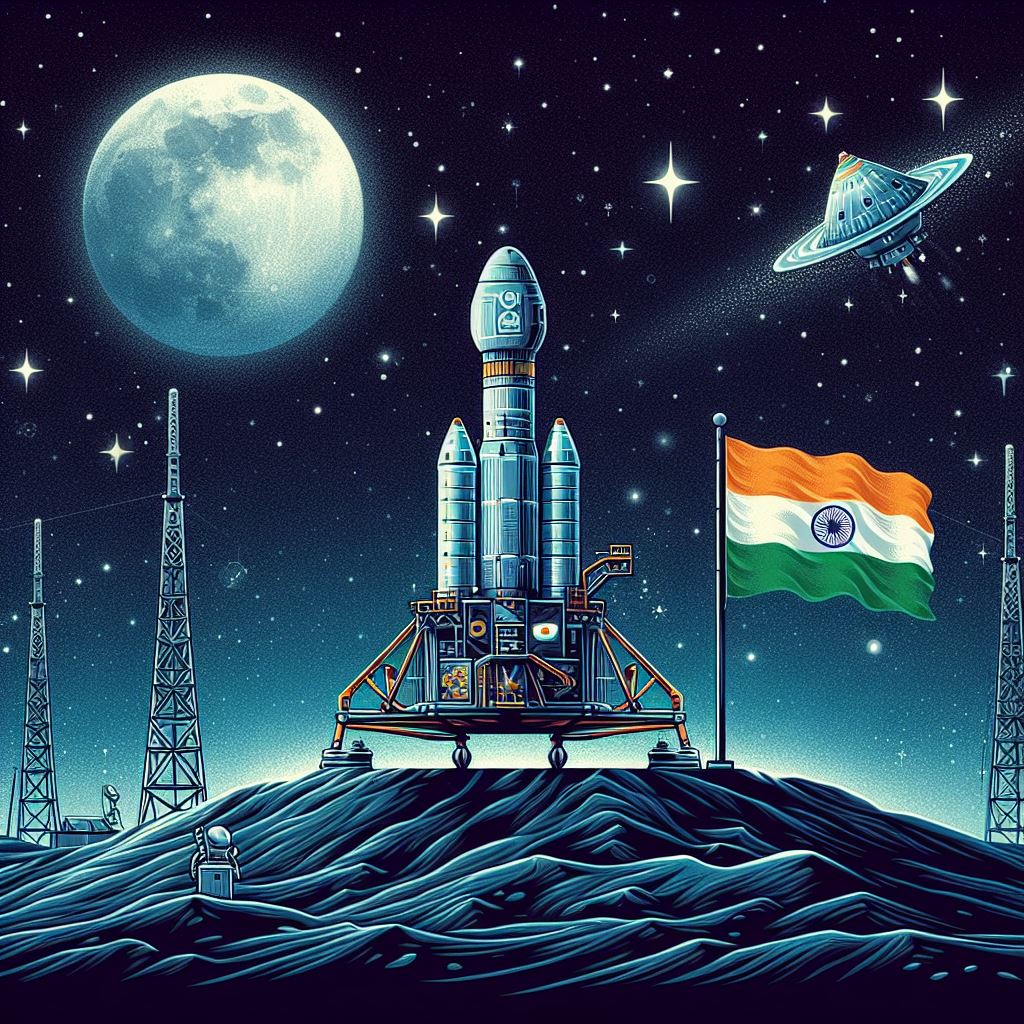
Inspire Scientific Curiosity and Exploration:
- Beyond its scientific objectives, Chandrayaan 3 aims to inspire curiosity and fascination with space exploration among the public, especially the youth. By sharing the mission’s progress and discoveries through educational outreach programs and media engagements, ISRO seeks to ignite a passion for science and exploration in the hearts and minds of future generations.
Contribute to Global Lunar Research Efforts:
- Chandrayaan 3 is part of the global endeavor to explore and understand the Moon’s significance in planetary science and space exploration. By sharing data and collaborating with international partners, the mission contributes to a collective body of knowledge that benefits humanity as a whole.
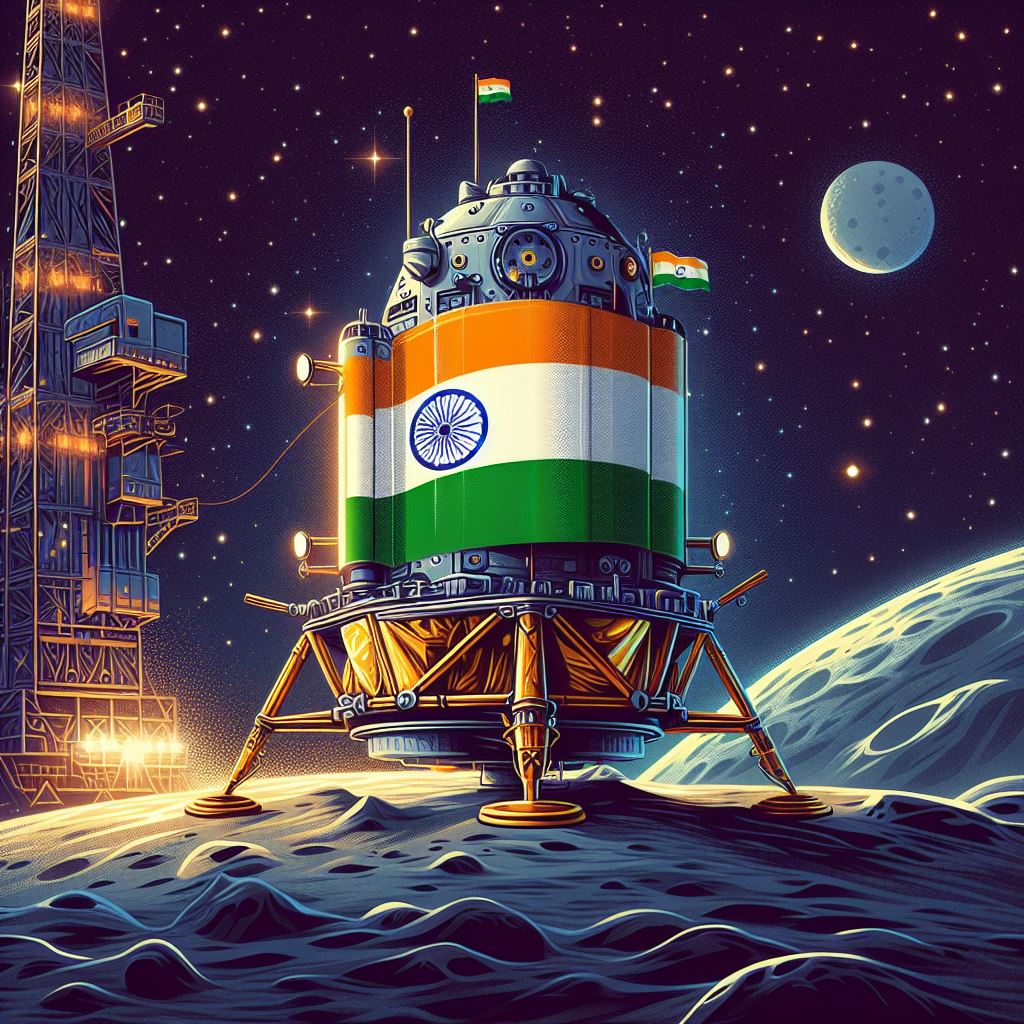
Overview of India’s Space Exploration Program
India’s space program has evolved significantly since its inception in the 1960s. From humble beginnings, ISRO has emerged as a global space power, with successful missions like Mangalyaan (Mars Orbiter Mission) and Chandrayaan 1 showcasing India’s scientific and technological capabilities.
Challenges Faced by Chandrayaan 2
Chandrayaan 2, although hailed as a success for its orbiter component, faced challenges during its Vikram lander’s descent. The loss of communication with the lander in the final moments highlighted the complexities of lunar landing missions.
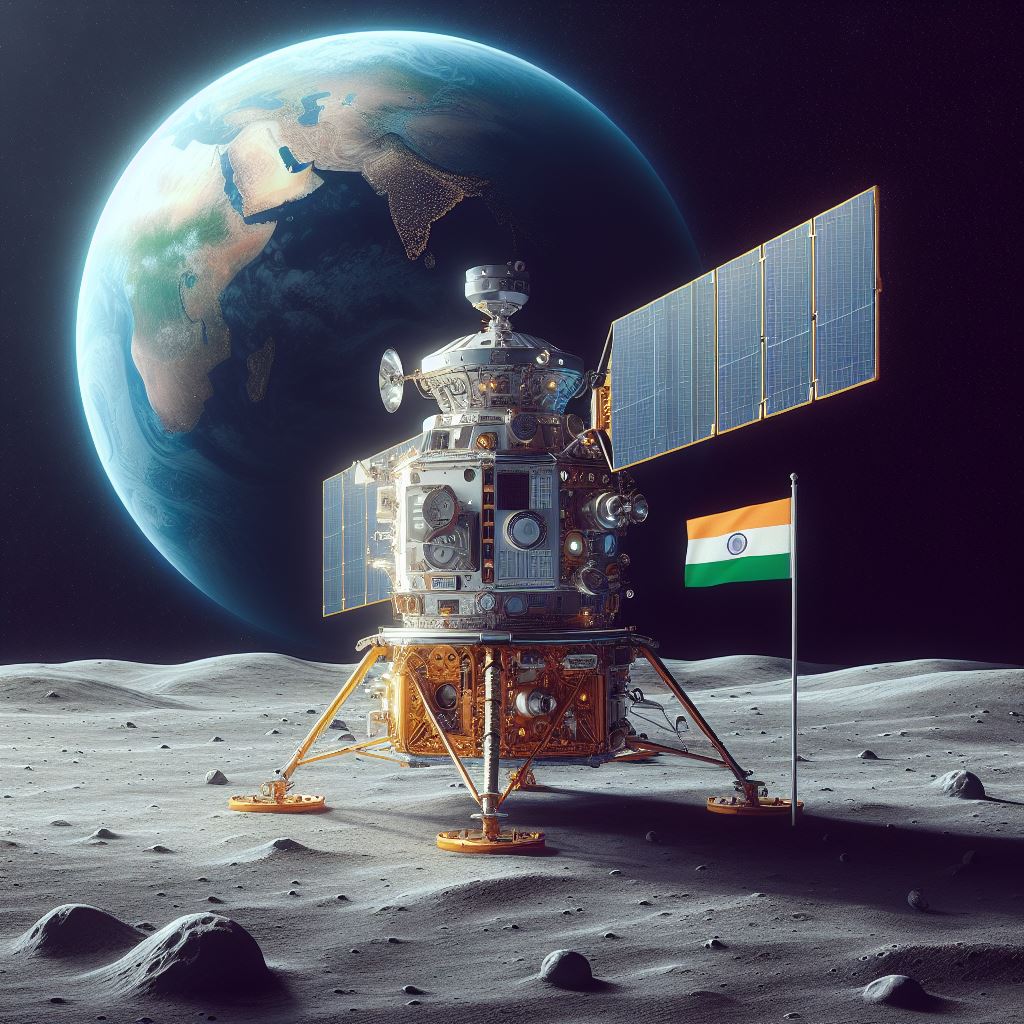
Lessons Learned and Improvements for Chandrayaan 3
ISRO meticulously analyzed the failures of Chandrayaan 2 and incorporated crucial lessons into Chandrayaan 3’s design and execution. Enhanced communication systems, improved navigation algorithms, and rigorous testing procedures are among the key improvements implemented for the mission.
Key Technologies Used in Chandrayaan 3
Chandrayaan 3 utilizes state-of-the-art technologies, including advanced propulsion systems, high-resolution imaging instruments, and autonomous navigation capabilities. These technologies enable precise maneuvering and data collection during the mission’s various phases.

Significance of Chandrayaan 3 for India
Chandrayaan 3 holds immense significance for India on both scientific and strategic fronts. It reaffirms India’s status as a space-faring nation and fosters national pride and inspiration among its citizens. Moreover, the mission contributes to India’s technological advancement and economic growth through the development of indigenous space technologies.
International Collaborations and Partnerships
ISRO actively collaborates with international space agencies and organizations to leverage expertise and resources for Chandrayaan 3. Collaborative efforts enhance the mission’s scientific output and promote global cooperation in space exploration.
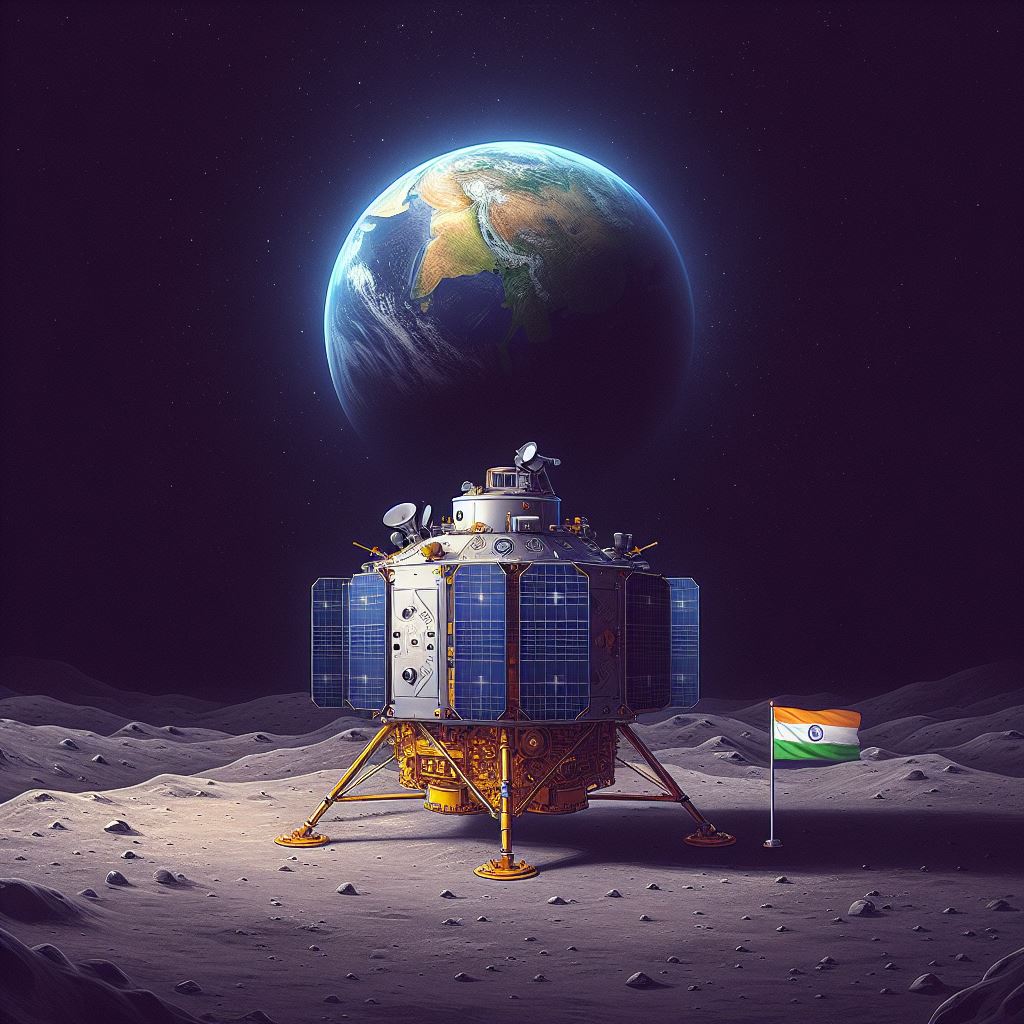
Chandrayaan 3’s Impact on Scientific Research
Chandrayaan 3’s data and findings will significantly contribute to our understanding of the Moon’s composition, geology, and evolution. Scientists anticipate groundbreaking discoveries that could reshape our knowledge of lunar history and pave the way for future lunar exploration missions.
Future Prospects for India’s Space Exploration
Chandrayaan 3 marks just the beginning of India’s ambitious space exploration agenda. With plans for manned missions, interplanetary exploration, and satellite launches, India is poised to play a pivotal role in shaping the future of space exploration.

Public Interest and Awareness
Chandrayaan 3 has captured the imagination of people worldwide, sparking widespread interest and curiosity about space exploration. ISRO’s outreach efforts, including educational programs and public engagement initiatives, aim to foster scientific literacy and inspire the next generation of space enthusiasts.
Challenges Ahead for Chandrayaan 3
Despite the meticulous planning and technological advancements, Chandrayaan 3 faces numerous challenges, including unpredictable lunar terrain, communication complexities, and mission operational risks. Overcoming these challenges requires continuous innovation and adaptive strategies.

Economic and Technological Benefits
Chandrayaan 3 generates significant economic and technological benefits for India, stimulating innovation, creating employment opportunities, and fostering industrial growth. The mission’s success enhances India’s global reputation and attracts foreign investment in its space sector.
Conclusion
Chandrayaan 3 represents a milestone in India’s space exploration journey, embodying the nation’s spirit of scientific inquiry and technological innovation. With its ambitious goals and collaborative approach, Chandrayaan 3 inspires hope for a future where humanity explores the cosmos together.
In conclusion, Chandrayaan 3 symbolizes India’s unwavering commitment to pushing the boundaries of space exploration. With its blend of innovation, collaboration, and determination, this mission not only propels India into the forefront of lunar exploration but also inspires the world to dream big and reach for the stars.
To sum up, Chandrayaan 3 marks a significant milestone in India’s journey towards becoming a leading space-faring nation. Its success not only showcases India’s scientific and technological prowess but also underscores the importance of international cooperation in unraveling the mysteries of the cosmos.
In summary, Chandrayaan 3 represents a triumph of human ingenuity and perseverance. As India embarks on this ambitious mission, it invites the global community to join hands in exploring the vast expanse of space and unlocking the secrets of the universe for the betterment of humanity.
In summary, Chandrayaan 3 exemplifies India’s indomitable spirit of exploration and discovery. By venturing into the uncharted territory of the Moon once again, India reaffirms its commitment to advancing scientific knowledge and fostering innovation for the benefit of all mankind.
To conclude, Chandrayaan 3 stands as a testament to India’s vision, ambition, and resolve. As the mission unfolds, it opens new horizons of possibility, ignites imaginations, and paves the way for a future where humanity boldly ventures into the cosmos, driven by the insatiable quest for knowledge and understanding.
FAQs
- What is Chandrayaan 3’s primary objective?
- Chandrayaan 3 aims to demonstrate India’s capability to soft-land on the lunar surface and conduct scientific exploration.
- How does Chandrayaan 3 differ from its predecessors?
- Chandrayaan 3 incorporates lessons learned from Chandrayaan 2’s challenges and features enhancements in technology and mission design.
- What are the key technologies used in Chandrayaan 3?
- Chandrayaan 3 utilizes advanced propulsion systems, high-resolution imaging instruments, and autonomous navigation capabilities.
- What is the significance of Chandrayaan 3 for India?
- Chandrayaan 3 reaffirms India’s status as a space-faring nation and contributes to its technological advancement and scientific prowess.
- What are the future prospects for India’s space exploration?
- India aims to undertake manned missions, interplanetary exploration, and satellite launches as part of its ambitious space exploration agenda.
- What is Chandrayaan 3, and what are its main objectives?
- Chandrayaan 3 is India’s third lunar exploration mission, aimed at achieving a soft landing on the Moon’s surface. Its main objectives include demonstrating India’s capability for precise lunar landings, conducting scientific studies of the lunar surface, and enhancing our understanding of the Moon’s geology and evolution.
- How does Chandrayaan 3 differ from Chandrayaan 2?
- Chandrayaan 3 builds upon the experiences and technologies of Chandrayaan 2, focusing specifically on achieving a successful soft landing on the lunar surface. While Chandrayaan 2’s Vikram lander lost communication during its descent, Chandrayaan 3 aims to rectify this and demonstrate India’s prowess in lunar landing technology.
- What are the key components of Chandrayaan 3’s spacecraft?
- Chandrayaan 3 consists of an orbiter, a lander, and a rover. The orbiter remains in lunar orbit to relay data and communicate with Earth, while the lander carries the rover to the lunar surface for scientific exploration.
- How does Chandrayaan 3 navigate its way to the Moon?
- Chandrayaan 3 navigates its way to the Moon using onboard guidance systems and thrusters to adjust its trajectory. Ground controllers at the Indian Space Research Organisation (ISRO) monitor the spacecraft’s progress and make course corrections as needed during the journey.
- What scientific instruments does Chandrayaan 3 carry, and what are their purposes?
- Chandrayaan 3 is equipped with a suite of scientific instruments, including cameras, spectrometers, and drills, to study the lunar surface. These instruments analyze the Moon’s composition, mineralogy, and topography, providing valuable data for scientific research.
- What are the challenges involved in soft-landing on the lunar surface, and how does Chandrayaan 3 overcome them?
- Soft landing on the lunar surface presents challenges such as precise navigation, terrain recognition, and touchdown stability. Chandrayaan 3 addresses these challenges through advanced guidance systems, hazard detection algorithms, and landing gear designed to absorb impact forces.
- How long does it take for Chandrayaan 3 to reach the Moon from Earth?
- The journey from Earth to the Moon typically takes Chandrayaan 3 several days to complete, depending on its launch trajectory and velocity. Once in lunar orbit, the spacecraft enters a series of maneuvers to align itself for descent and landing.
- What is the significance of Chandrayaan 3’s mission for India’s space exploration program?
- Chandrayaan 3’s mission is significant for India’s space exploration program as it demonstrates the country’s technological capabilities and scientific ambition. Success in achieving a soft landing on the Moon would establish India as a major player in lunar exploration and pave the way for future missions.
- How does Chandrayaan 3 contribute to our understanding of the Moon’s resources and potential for future exploration?
- Chandrayaan 3 contributes to our understanding of the Moon’s resources by studying its surface composition and identifying potential water ice deposits. This information is valuable for planning future lunar missions, including human exploration and resource utilization.
- What role does international collaboration play in Chandrayaan 3’s mission?
- International collaboration plays a significant role in Chandrayaan 3’s mission by facilitating the exchange of expertise, resources, and data with other space agencies and countries. Collaborative efforts enhance the scientific output and success of the mission while fostering global cooperation in space exploration.
- How does Chandrayaan 3’s mission align with India’s broader scientific and technological goals?
- Chandrayaan 3’s mission aligns with India’s broader scientific and technological goals by advancing space exploration, fostering innovation, and promoting indigenous expertise. By undertaking ambitious missions like Chandrayaan 3, India aims to strengthen its position as a leader in space science and technology.
- What are the potential risks and uncertainties associated with Chandrayaan 3’s mission?
- Chandrayaan 3’s mission entails risks such as technical failures, communication loss, and landing malfunctions. These risks are mitigated through rigorous testing, redundancy in critical systems, and contingency plans to address unforeseen challenges during the mission.
- How does Chandrayaan 3’s mission inspire and engage the public in India and around the world?
- Chandrayaan 3’s mission inspires and engages the public by showcasing India’s achievements in space exploration and scientific discovery. Through media coverage, educational outreach, and public events, the mission sparks interest and curiosity in space science and encourages the next generation of scientists and engineers.
- What are the long-term implications of Chandrayaan 3’s mission for India’s space program and beyond?
- Chandrayaan 3’s mission has long-term implications for India’s space program, including advancements in technology, infrastructure, and human capital. Success in lunar exploration could lead to future missions to Mars, asteroids, and beyond, positioning India as a global leader in space exploration.
- How does Chandrayaan 3’s mission contribute to addressing global challenges and advancing scientific knowledge?
- Chandrayaan 3’s mission contributes to addressing global challenges such as climate change, resource scarcity, and sustainable development by expanding our understanding of the Moon’s role in planetary science and exploration. By conducting scientific research and sharing data internationally, Chandrayaan 3 promotes collaboration and innovation for the benefit of humanity.
Unique FAQs
- How does Chandrayaan 3 differ from previous lunar missions undertaken by India?
- Chandrayaan 3 differs from its predecessors in several key aspects. While Chandrayaan 1 focused primarily on orbital mapping and Chandrayaan 2 attempted a soft landing on the Moon, Chandrayaan 3 aims to refine and improve upon the technologies and lessons learned from these missions. Specifically, Chandrayaan 3 prioritizes achieving a successful soft landing on the lunar surface, building upon the experiences of Chandrayaan 2’s Vikram lander.
- What are the specific scientific instruments onboard Chandrayaan 3, and how do they contribute to its mission objectives?
- Chandrayaan 3 is equipped with a suite of scientific instruments designed to study the lunar surface in detail. These instruments include high-resolution cameras, spectrometers, and sensors to analyze the Moon’s composition, topography, and mineralogy. By collecting data on these parameters, Chandrayaan 3 aims to enhance our understanding of the Moon’s geological history and evolution.
- How does Chandrayaan 3 navigate and communicate with Earth during its mission?
- Chandrayaan 3 utilizes advanced navigation systems and communication technologies to navigate autonomously and maintain contact with mission control on Earth. The spacecraft is equipped with onboard computers and sensors that enable it to determine its position relative to the Moon and make necessary adjustments to its trajectory. Additionally, Chandrayaan 3 communicates with Earth through a network of ground stations and satellites, transmitting data and receiving commands in real-time.
- What are the main challenges associated with a soft landing on the lunar surface, and how does Chandrayaan 3 address these challenges?
- Soft landing on the lunar surface poses numerous technical challenges, including precise navigation, descent, and touchdown in a rugged and uneven terrain. Chandrayaan 3 addresses these challenges through the use of advanced guidance and control systems, as well as redundant safety mechanisms to ensure a safe and successful landing. Additionally, lessons learned from previous missions, such as Chandrayaan 2, inform the design and execution of Chandrayaan 3’s landing sequence.
- What are the potential scientific discoveries that Chandrayaan 3 could make during its mission?
- Chandrayaan 3 has the potential to make significant scientific discoveries related to the Moon’s geology, mineralogy, and surface features. By studying lunar samples and conducting in-situ measurements, the mission could shed light on the Moon’s formation and evolution, as well as provide insights into its geological processes and history of volcanic activity.
- How does Chandrayaan 3 contribute to India’s space exploration goals and objectives?
- Chandrayaan 3 plays a crucial role in advancing India’s space exploration capabilities and achieving its strategic objectives in space. By demonstrating India’s ability to undertake complex lunar missions, Chandrayaan 3 strengthens the country’s position as a leading space-faring nation and enhances its scientific and technological prowess on the global stage.
- What are the key milestones and phases of Chandrayaan 3’s mission timeline?
- Chandrayaan 3’s mission timeline consists of several key milestones and phases, including launch, lunar transit, orbit insertion, descent, and landing. Each phase requires precise coordination and execution to ensure the mission’s success, with dedicated teams overseeing various aspects of the spacecraft’s operations and scientific objectives.
- How does Chandrayaan 3 contribute to international collaboration and cooperation in space exploration?
- Chandrayaan 3 fosters international collaboration and cooperation in space exploration by engaging with other space agencies and organizations to share resources, expertise, and data. Through collaborative efforts, Chandrayaan 3 aims to maximize the scientific output of its mission and contribute to a broader understanding of the Moon’s significance in planetary science and exploration.
- What are the potential implications of Chandrayaan 3’s findings for future lunar exploration missions?
- Chandrayaan 3’s findings have the potential to shape the trajectory of future lunar exploration missions by providing valuable insights into the Moon’s composition, resources, and environmental conditions. By identifying suitable landing sites, characterizing lunar resources, and assessing potential hazards, Chandrayaan 3 contributes to the planning and development of future human and robotic missions to the Moon.
- How does Chandrayaan 3 impact India’s scientific research and development ecosystem?
- Chandrayaan 3 catalyzes India’s scientific research and development ecosystem by fostering innovation, collaboration, and interdisciplinary research. The mission provides opportunities for scientists, engineers, and technologists to contribute to cutting-edge space exploration initiatives, driving advancements in space technology, instrumentation, and scientific discovery.
- What are the specific challenges associated with operating spacecraft in the harsh lunar environment, and how does Chandrayaan 3 address these challenges?
- Operating spacecraft in the harsh lunar environment presents numerous challenges, including extreme temperatures, low gravity, and high levels of radiation. Chandrayaan 3 addresses these challenges through the use of robust spacecraft design, thermal insulation, radiation shielding, and redundant systems to ensure the reliability and longevity of its mission.
- How do Chandrayaan 3’s mission objectives align with India’s broader scientific and technological goals?
- Chandrayaan 3’s mission objectives align closely with India’s broader scientific and technological goals, including advancing space exploration, promoting indigenous innovation, and fostering international collaboration. By pursuing ambitious missions like Chandrayaan 3, India aims to position itself as a global leader in space science, technology, and exploration.
- What are the potential risks and uncertainties associated with Chandrayaan 3’s mission, and how does ISRO mitigate these risks?
- Chandrayaan 3’s mission entails inherent risks and uncertainties, including technical failures, operational challenges, and environmental hazards. ISRO mitigates these risks through rigorous testing, simulation, and validation processes, as well as contingency planning and risk management strategies to ensure the mission’s success and safety.
- How does Chandrayaan 3 contribute to our understanding of the Moon’s potential for future human settlement and exploration?
- Chandrayaan 3 contributes to our understanding of the Moon’s potential for future human settlement and exploration by characterizing its resources, environment, and geological features. By identifying water ice deposits, assessing surface conditions, and mapping suitable landing sites, Chandrayaan 3 informs the planning and development of future human missions to the Moon.
- What are the key technological innovations and advancements developed for Chandrayaan 3’s mission, and how do they benefit future space exploration initiatives?
- Chandrayaan 3 incorporates several technological innovations and advancements, including autonomous navigation systems, precision landing algorithms, and miniaturized scientific instruments. These technologies not only enable Chandrayaan 3 to achieve its mission objectives but also serve as building blocks for future space exploration initiatives, both lunar and beyond.
- How does Chandrayaan 3’s mission contribute to India’s strategic interests and objectives in space?
- Chandrayaan 3’s mission contributes to India’s strategic interests and objectives in space by enhancing its national security, economic competitiveness, and technological sovereignty. By demonstrating its space capabilities and fostering international collaboration, India strengthens its position as a regional and global leader in space exploration and innovation.
- What are the potential environmental impacts of Chandrayaan 3’s mission on the lunar surface, and how does ISRO address these concerns?
- Chandrayaan 3’s mission aims to minimize its environmental impact on the lunar surface through responsible spacecraft design, operation, and disposal practices. ISRO adheres to international guidelines and best practices for planetary protection and environmental stewardship to ensure that Chandrayaan 3’s mission activities do not adversely affect the lunar environment or future scientific exploration.
- How does Chandrayaan 3’s mission contribute to inspiring and engaging the next generation of scientists, engineers, and explorers?
- Chandrayaan 3’s mission inspires and engages the next generation of scientists, engineers, and explorers by showcasing India’s achievements in space exploration and scientific discovery. Through educational outreach programs, public engagement initiatives, and media coverage, Chandrayaan 3 fosters a sense of curiosity, wonder, and pride in India’s space endeavors, motivating young minds to pursue careers in STEM fields and aspire to reach for the stars.
- What are the economic benefits and opportunities generated by Chandrayaan 3’s mission for India’s space industry and economy?
- Chandrayaan 3’s mission generates economic benefits and opportunities for India’s space industry and economy by stimulating innovation, creating high-skilled jobs, and driving technological advancements. The mission’s success enhances India’s global reputation and competitiveness in the space sector, attracting investment, talent, and partnerships that contribute to economic growth and prosperity.
- How does Chandrayaan 3’s mission contribute to fostering international collaboration and cooperation in space exploration?
- Chandrayaan 3’s mission fosters international collaboration and cooperation in space exploration by partnering with other space agencies, organizations, and countries to share resources, expertise, and data. Through collaborative efforts, Chandrayaan 3 aims to maximize the scientific output and societal benefits of its mission, while promoting peaceful cooperation and diplomacy in space exploration endeavors.
